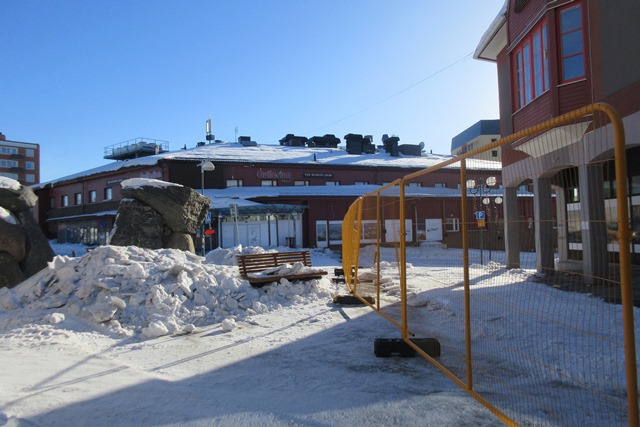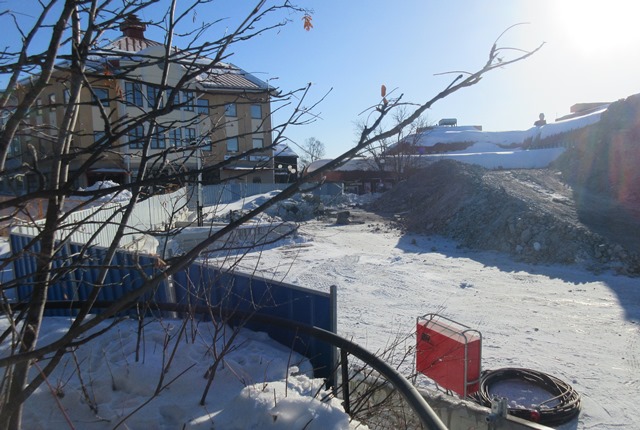Returning to Kiruna and going into what is now known as ‘the old town’ is like approaching a battle ground. You know the battle is ongoing, though there are frequent pauses between bouts of destruction. You don’t know what to expect, except more destruction.
I approached cautiously, seeing the fences at the end of the street. The Bishops Inn was still there, and open, but it was on the edge of the war zone. Behind and below it there were gaps in the skyline where buildings had been brought down. Fences snaked either side, leading down to temporarily halted bulldozers and piles of snow-covered earth, concrete and other building debris.

Empty buildings sighed with neglect. Heating pumps had fallen off walls and were left swaying in the wind. There were holes in the sides of concrete buildings. Cracks marked lines of damage up and down, side to side. Some buildings looked almost normal, facing their future execution with brave bright faces, in denial of their future demise. I have an emotional investment in this town, and to see it removed, erased from view, is like having your memory wiped in front of you. What it must be like for people who have lived here all their lives is hard to imagine.
In these surroundings it was no surprise to see a couple of Swedish army officers strolling down the street in their combat gear. Peering round a corner I saw a sign for a bunker – Sweden has had these since the 1930s – and you think you might suddenly have to dive in one of them for shelter not from a falling bomb or chemical warfare, but from a falling building. You won’t of course – the mining company’s demolition of the town is slow and steady, and way ahead of any imminent danger.


NATO’s current Nordic 24 exercise is a fictional movement of army and equipment, planes and vehicles, around the far north of Scandinavia and Finland. They won’t have to use their imagination to picture Kiruna as a besieged, threatened, war-torn town.

